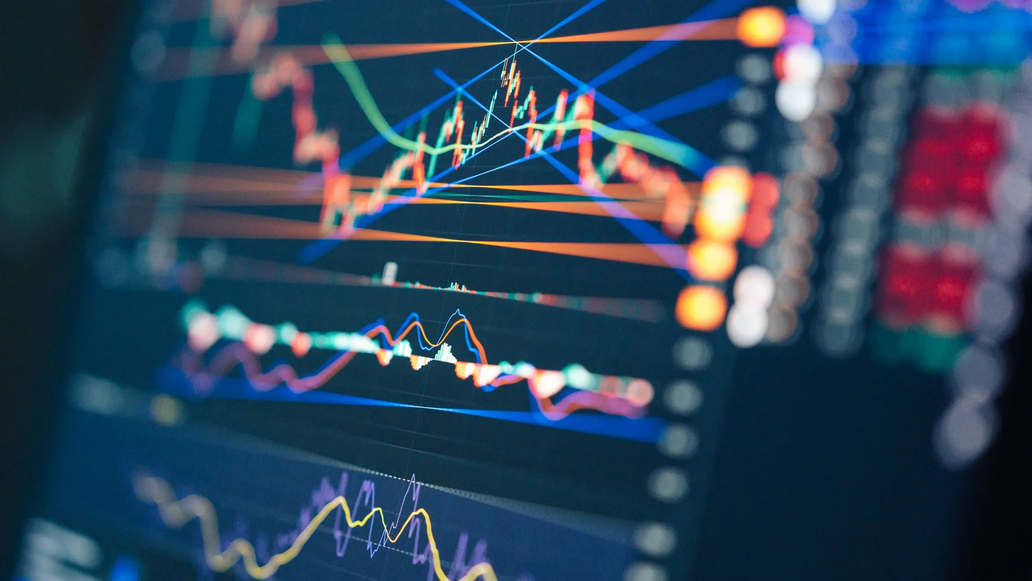So you’ve heard people talking about crypto futures trading, and you’re wondering what all the fuss is about. Maybe you’ve seen those screenshots of massive gains (or losses) on Twitter, or a friend mentioned they’re “shorting Bitcoin.” Don’t worry – I’m going to break this down in plain English, without the Wall Street speak that makes most people’s eyes glaze over.
What Exactly Are Crypto Futures?
Think of futures trading like making a deal for something you’ll buy or sell later. Imagine you’re at a farmer’s market, and it’s currently winter. You tell the apple farmer, “Hey, I’ll pay you $50 for a bushel of apples that you’ll deliver to me in the fall.” That’s essentially a futures contract – you’re agreeing on a price today for something that will be delivered in the future.
Crypto futures work the same way, except instead of apples, you’re dealing with Bitcoin, Ethereum, or other cryptocurrencies. You’re making a bet on what you think the price will be at a specific date in the future.
But here’s where it gets interesting (and a bit more complex): most crypto futures traders never actually want the cryptocurrency delivered to them. They’re just speculating on price movements to make a profit.
Why Would Anyone Want to Trade Futures?
Great question! There are a few reasons why people choose futures over just buying crypto directly:
Leverage is the big one. This means you can control a large position with a relatively small amount of money. For example, with 10x leverage, you could control $10,000 worth of Bitcoin with just $1,000 of your own money. Sounds amazing, right? Well, hold that thought – we’ll talk about why this can be dangerous in a minute.
You can profit when prices go down. With regular crypto buying, you only make money when prices go up. With futures, you can “short” – basically betting that the price will fall. This means you can potentially profit in both bull and bear markets.
No need to store actual crypto. You don’t have to worry about wallets, private keys, or security. You’re just trading contracts.
The Two Main Types: Long and Short
This is simpler than it sounds:
Going long means you think the price will go up. If Bitcoin is at $30,000 and you go long, you’re betting it will be higher in the future. If it goes to $35,000, you make money.
Going short means you think the price will go down. If Bitcoin is at $30,000 and you go short, you’re betting it will be lower in the future. If it drops to $25,000, you make money.
It’s like being optimistic or pessimistic about where the price is heading.
How Leverage Works (And Why It’s a Double-Edged Sword)
Let’s say you have $1,000 and Bitcoin is trading at $30,000. Normally, you could buy about 0.033 Bitcoin. But with 10x leverage, you can control 0.33 Bitcoin (10 times more).
If Bitcoin goes up to $33,000 (a 10% increase):
- Without leverage: You’d make $100 (10% of your $1,000)
- With 10x leverage: You’d make $1,000 (your money just doubled!)
Sounds incredible, right? But here’s the catch:
If Bitcoin drops to $27,000 (a 10% decrease):
- Without leverage: You’d lose $100
- With 10x leverage: You’d lose your entire $1,000
This is called liquidation – when your losses hit a certain point, the exchange automatically closes your position to prevent you from losing more than you have. With high leverage, you can get liquidated with relatively small price movements.
Popular Platforms for Beginners
If you’re thinking about dipping your toes into futures trading, here are some user-friendly platforms:
Binance Futures is probably the most popular, with lots of educational resources and a practice mode where you can trade with fake money first.
Bitget (though check current availability in your region) was known for its clean interface and good customer support.
Bybit is another option that’s popular with beginners, offering demo accounts and educational content.
Always start with the demo or paper trading features these platforms offer. It’s like playing a video game version of trading where you can’t lose real money while you’re learning.
Risk Management: The Boring Stuff That Could Save Your Shirt
I know, I know – risk management sounds about as exciting as watching paint dry. But this is the difference between traders who last long-term and those who blow up their accounts in a week.
Never risk more than you can afford to lose. I’m serious about this one. Crypto futures are highly speculative, and you could lose everything.
Start small. Even if you have $10,000 to play with, start with $100 or $500. Learn the ropes before you go big.
Use stop-losses. This is like having an emergency exit. You set a price where your position will automatically close if things go against you, limiting your losses.
Don’t use crazy leverage. I know 100x leverage sounds tempting, but even experienced traders rarely go above 3-5x. Start with 2x or even no leverage at all.
Common Beginner Mistakes (Learn From Others’ Pain)
Revenge trading: You lose money on a trade, get emotional, and immediately make a bigger bet to “win it back.” This usually ends badly.
FOMO (Fear of Missing Out): Bitcoin pumps 20% in a day, and you jump in with high leverage right at the top. By the time you hear about big moves on social media, it’s often too late.
Not understanding funding rates: Futures contracts have funding rates that can eat into your profits if you hold positions for too long. Do your homework on this.
Ignoring market conditions: Trading futures in a stable market is very different from trading during high volatility periods. What works in one environment might not work in another.
The Reality Check
Let me be brutally honest with you: most people who try futures trading lose money. The statistics aren’t pretty. It’s not because they’re stupid – it’s because futures trading is genuinely difficult and requires skills that take time to develop.
Think of it like learning to play poker at a casino. Sure, you might get lucky and win some hands early on, but if you don’t understand the game deeply, the house (and more experienced players) will eventually take your money.
Should You Try It?
Only you can answer this, but ask yourself:
- Do you have money you can genuinely afford to lose?
- Are you prepared to spend significant time learning and practicing?
- Can you handle the stress of potentially losing money quickly?
- Do you have realistic expectations about profits?
If you answered yes to all of these, then maybe futures trading is worth exploring. But start with education, use demo accounts extensively, and begin with tiny positions.
Final Thoughts
Crypto futures trading can be profitable, but it’s not a get-rich-quick scheme. It’s more like learning a complex skill that requires patience, discipline, and continuous learning. The people who succeed treat it like a business, not like gambling.
If you’re just getting started in crypto, you might want to focus on understanding spot trading (regular buying and selling) first, then consider futures once you have a solid foundation.
Remember: the goal isn’t to make money quickly – it’s to not lose money quickly while you’re learning. Everything else comes after that.
Stay safe out there, and never invest more than you can afford to lose. The crypto markets will still be here tomorrow, so there’s no need to risk your financial future on any single trade.

With over 6 years of experience in the blogging world, I specialize in crafting engaging, informative, and SEO-optimized content across various niches including tech, digital trends, and online monetization. I thrive on staying ahead of industry trends, experimenting with new content strategies, and helping others grow their digital presence.



